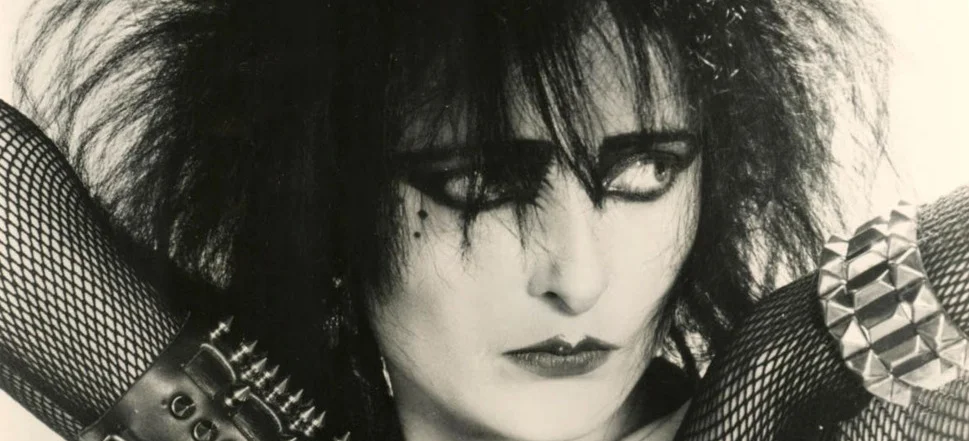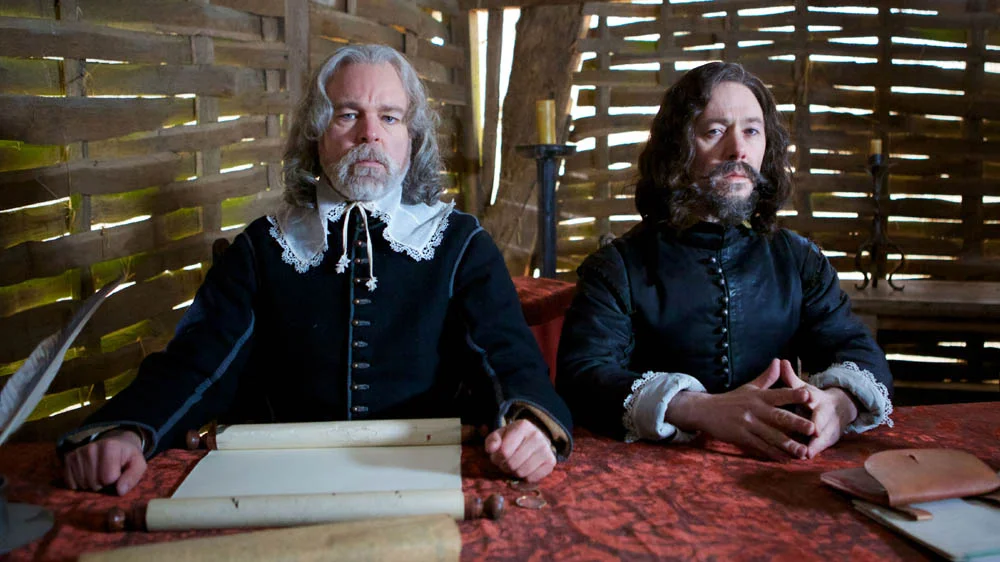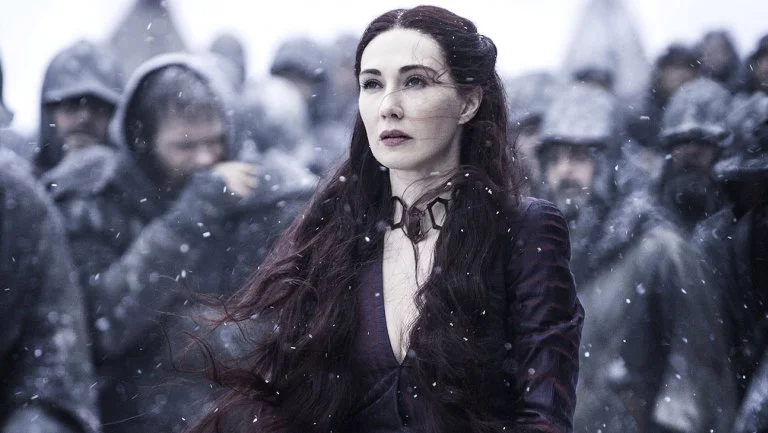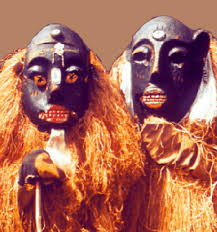By The Landlord
“That old black magic has me in its spell,
That old black magic that you weave so well;
Icy fingers up and down my spine,
The same old witchcraft when your eyes meet mine.” – Johnny Mercer
“Eye of newt, and toe of frog,
Wool of bat, and tongue of dog,
Adder's fork, and blind-worm's sting,
Lizard's leg, and owlet's wing,—
For a charm of powerful trouble,
Like a hell-broth boil and bubble.
Double, double toil and trouble;
Fire burn, and cauldron bubble.” – William Shakespeare, Macbeth
I once discovered I have some long-distant relatives who were witches. They were hot ladies. They got burned at the stake. It's not easy being a witch. Historically it means being a social pariah, feared and loathed by intimidated men, and possibly also admired and desired, but aside from all the superstition and the supernatural elements, spells, curses, necromancy, whatever form that might take, witchery or witchcraft is perhaps also a reaction by some of most intelligent, talented, perhaps fierce, certainly articulate and persuasive women, who were not lucky enough to be born into wealth and privilege, to gain and utilise power, and have a place in society. Some of them may well have been evil bitches, but witches are also an expression of others' fears.
Trouble in Trumpton? From a Radiohead video …
I've met quite a few women over the years who imagine they would be witches if born in another era. Arguably that would also include great artists, such as Lotte Lenya to Lene Lovich, Siouxsie Sioux to Kate Bush. How else might men of the past been able to perceive these extraordinary figures?
Crafty Kate Bush
Another myth about witches is that western cliché, they are almost always ugly, evil, or indeed women. Of course in cultures across Africa, India and beyond, there are witchdoctors and shaman coming in many forms, more often men, and who very much conjure up similar roles to that of the traditional western media witch. In the last 10 years I've also met a couple of white witches, one of each gender, whose philosophy is not about casting spells against people, or being in league with the devil and studying black magic, but spreading positive attitudes and outcomes by attempting to be in tune with the cycles of nature. Their position may centre around the changing of the seasons, pagan rituals, the vernal equinox, and their mission, in between doing normal jobs, might have a ecological side. In the case of the latter of the two witches, both their mission and position also involved going to the woods, saving animals and other ecological work, and then celebrate by consuming various mushrooms, dancing wildly and engaging in a massive orgy. So it's not always bad being a witch.
So how might witches and witchcraft come up in song? Certainly they inspire a whole spectrum of otherworldly music, of powerful forces, a mixture of fear and sexiness, of evil and struggle. Previous topics have included magic, and the devil, which involves overlaps, but nothing yet that centres upon witches and witchcraft itself.
Where did it all begin, this western witch idea? Perhaps the familiar witch profile began with the Malleus Maleficarum, usually translated as the Hammer of Witches, the best known and the most thorough treatise on witchcraft.
From the Malleus Maleficarum, 1487
The book was written by discredited Catholic clergyman Heinrich Kramer (hyping himself into more authority with a Latinised version of name Henricus Institoris) it was first published what is now the German city of Speyer in 1487. It goes into so much obsessive detail about witches you'd imagine Heinrich also had a massive hard-on for them. Mind you, he also wanted to hunt them down via inquisitional means, and eliminate them. It was such a bestseller it was only narrowly beaten by the Bible for over 200 years. It also goes into great detail about how to detect and punish witchcraft, from ducking stools to many other forms of torture, in which logic and reason is entirely twisted to the torturers’ own ends
The Malleus Maleficarum is very much the source of all of those classic witchy cliches – the ugly hag with warts, long noses and chin, stirring evil potions, dancing, dining and flirting with the devil, predicting doom-laden futures, the flying broomstick, and the female witch would often by confused with those who could deliver on art of midwifery, or indeed prescribe for abortions. It's an image that's so pervasive, it has carried on in everything from Shakespeare's three witches in Macbeth to the Salem witch trials in the Massachusetts Bay Colony of the late 17th century, as dramatised by Arthur Miller in his 1953 play The Crucible, from the wicked and evil witches of the east and west in The Wizard of Oz, right into Harry Potter and Halloween costumes and visits to Wookey Hole and its caves on the edge of the Mendips in Somerset.
There are many films and books about this of course, but perhaps the sharpest and most recent lampooning of the cruel and superstitious practice comes in The Trial Of Elizabeth Gadge, from the second series of Inside No 9, written by and starring Reece Shearsmith and Steve Pemberton, brilliant writers and performers best known for their outrageous and influential characters from The League of Gentlemen.
The hilariously dark parody, The Trial Of Elizabeth Gadge, written by and starring Reece Shearsmith and Steve Pemberton
It parodies the Pendle Witch Trials of 1612, held in Pendle Hill, Lancashire, as well as a tongue-in-cheek (or is that pulling tongue out of cheek?) tribute to the Vincent Price 1968 film Witchfinder General based on famous early 17th-century witchhunter Matthew Hopkins, the 1971 British melodrama horror film The Blood on Satan's Claw[ and of course The Crucible. In Witchfinder General, it's all a bit of a sink-or-sink situation.
As Pemberton and Shearsmith’s League of Gentlemen co-star Mark Gatiss puts it: “Europe is so much the home of Horror, with its myths of vampires, werewolves, witchcraft and the undead, yet it's like those myths were exported to Hollywood, leaving Europe the room to develop a new tradition as a way of processing its traumas, particularly the two world wars.”
Of course there are many other interesting twists on the witch theme in modern culture. The 1987 film The Witches of Eastwick is a glamorous, trashy but funny parody of Devil-and-witches relationships, starring Cher, Michelle Pfeiffer and Susan Sarandon with Jack Nicholson.
Was Jack being a prick? The Witches of Eastwick (1987)
Roald Dahl’s The Witches meanwhile is a children’s book with a twist - it’s from the point of view of a young British boy and his Norwegian grandmother in a world where there’s child-hating societies of witches. In the United Kingdom he finds that British witches are the most vicious of all, the child-catchers and bogeywomen of myth and legend, but also squabbling and incompetent.
Terry Pratchett, that prolific writer of fiction that like Dahl could straddle the child and adult market, loved comedic witches. “Witches were a bit like cats. They didn’t much like one another’s company, but they did like to know where all the other witches were, just in case they needed them.” he writes in A Hat Full of Sky. And in Equal Rites he captures that duplicitous role with a wry, light humour. “Granny Weatherwax was a witch. That was quite acceptable in the Ramtops, and no one had a bad word to say about witches. At least, not if he wanted to wake up in the morning the same shape as he went to bed.”
And back in the real world (or maybe not), of course witches and witchcraft in song must surely include the influence of Aleister Crowley and black magic witchcraft, an obsession for many rock musicians of the 70s.
That old devil Aleister Crowley
From a dangerous man to a dangerous woman, a reversal of the witch role, in an ironic way, comes in the form of Melisandre in George RR Martin’s Game of Thrones (A Song of Ice and Fire) series – Melisandre priestess of the god R’hllor, seductress of wannabe kings and other powerful men, very witch-like (especially when she's alone at night), but instead of being burned like those of her non-fictional past, she likes to burn her own victims in the name of her Lord of Light. Not very enlightened in my view, but an intriguing women in every way.
Brrr. Melisandre. Too hot to feel the cold
And now with the Bar’s hearth fire burning brightly this week, it also welcomes all sorts of other visitors to want to say something about this topic.
“At the word witch, we imagine the horrible old crones from Macbeth. But the cruel trials witches suffered teach us the opposite. Many perished precisely because they were young and beautiful,” says André Breton, author of the Anthology of Black Humor, entirely agreeing with much of what’s already been said.
“Witchcraft offers us the connection we need to be more than desperately criss-crossing the wasteland and perilously low on gas. In a real sense we have become severed from connections, overwritten, cut-up, lost in a globalised symbol set that provides no meaning beyond a message to consume,” says Peter Grey, reading from his Apocalyptic Witchcraft.
African witchdoctors
But what forms does witchcraft take in the modern world? “Polygraph tests are 20th-century witchcraft,” says Sam Ervin, a senator who became involved in the McCarthy witchhunts of the 1950s.
Perhaps politics, weaving its spell of spin and propaganda, is another form of witchcraft too. “I don't care much about politics. That kind of witchcraft I stay away from because people end up dead. I'd rather die for music, says the songwriter Cass McCombs.
But there’s also a big table of visitors to the Bar who are intrigued by witchcraft and see it in positive terms. “I love the idea that magic and witchcraft and battles between supernatural creatures could be raging all around us but just out of our sight,” says the writer Anthony Horowitz. And here’s Yoko Ono: “The human race is a very, very magical race. We have a magic power of witches and wizards. We're here on this earth to unravel the mystery of this planet. The planet is asking for it.”
Florence Welch, she of the Machine, has now swanned into the Bar, seeking attention, and getting it with her long red hair. But is it real? Perhaps not. “I dyed my hair red when I was 10 and when I was 11 – in my goth period – I dyed it black and I was really into witchcraft. I made mini shrines in my bedroom with candles and tried to cast spells to make the boy in the next class fall in love with me. I don't think he did.”
But some people take it further. “The first time I called myself a 'Witch' was the most magical moment of my life, says Margot Adler, pulling out her copy of Drawing Down the Moon: Witches, Druids, Goddess-Worshippers, and Other Pagans in America.
But how do you really define a witch? ““A Witch is a person who has honestly explored their light and has evolved to celebrate their darkness,” says Dacha Avelin. The writer Paulo Coelho (author of The Witch of Portobello) puts it in a more nuanced way: “To me, a witch is a woman that is capable of letting her intuition take hold of her actions, that communes with her environment, that isn't afraid of facing challenges.”
And so now it’s time to turn that challenge over to the very fine, and magical women and men who visit the Song Bar. Please place your songs on this topic in comments below. This week’s Grand Wizard, picking playlists from your nominations, and no doubt offering further guidance and some fantastic anecdotes, I’m pleased to say, is the magical sonofwebcore aka George Boyland, back for a second stint on these premises. Deadline? This coming Monday at 11pm UK time, for playlists published on Wednesday. I hope it’s neeither toil, nor trouble, but magical pleasure.
New to comment? It is quick and easy. You just need to login to Disqus once. All is explained i in About/FAQs ...
Fancy a turn behind the pumps at The Song Bar? Care to choose a playlist from songs nominated and write something about it? Then feel free to contact The Song Bar here, or try the usual email address. Also please follow us social media: Song Bar Twitter, Song Bar Facebook. Song Bar YouTube. Subscribe, follow and share.









